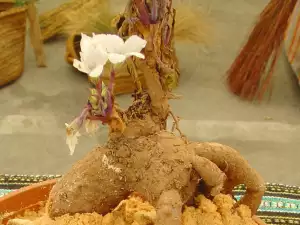Earthquakes are perhaps the most dangerous of all natural disasters. Besides the phenomenon itself, they induce other disasters, such as tsunamis. Here are some other facts about earthquakes.
Earthquakes are a result of the tension between the tectonic plates, when they become stuck. When this tension increases, the rocks sink and this causes cracks to form. The earthquake is the result of the sudden release of accumulated energy in the earth's crust. This creates seismic waves and leads to the shaking or movement of the ground. Earthquakes can bring about shaking, cracks in the ground, fires, soil liquefaction, mudslides, avalanches and tsunamis.
The earthquake in the Indian Ocean in 2004 led to a devastating tsunami. It originated in the ocean, which in turn led to a great number of tsunamis along the borders of the Indian Ocean. They raged in Sri Lanka, Indonesia, India and Thailand.
In addition, earthquakes can take lives, cause disease, loss of services, property damage, as well as the destruction of roads and bridges, the collapse of buildings or destabilization of a building's foundations. Because of this, earthquakes inflict both personal and economic losses.

Seismologists depends on seismograms (digital models and other geo-surveying measurements) to measure the earthquake's strength. Magnitude is the quantifying expression of the quake, while the shaking force is called intensity. The area under the earth's surface where the movement of the earth layers begins is called the hypocenter. The point directly above the hypocenter on the Earth's surface is known as the epicenter.
There are around 500 000 earthquakes in the world annually. Even if 10 000 of them are actually felt, 100 can cause serious damage. The earliest registered quake was in the province of Shandong in China in 1831 B.C.
The largest earthquake zone in the world is Alaska. It is one of the most active seismic zones. In Alaska, there is an 8 or higher magnitude quake every 14 years and a magnitude 7 quake almost every year. In 1960, during the Chilean earthquake, the seismic waves "traveled" around the world for a period of many days. This is known as a free vibration in the earth. In Antarctica, there is a phenomenon similar to an earthquake, known as an ice quake. Ice quakes happen in ice sheets rather than earth layers. The first quake in America was registered in 1663 by European settlers.

The most powerful registered earthquake was in Chili in 1960. Its magnitude was 9.5.
Most earthquakes occur at the borders of tectonic plates. The Pacific Plate is known as the Ring of Fire, since it is one of the most active and often has not only earthquakes but volcanic eruptions too.
An earthquake is a natural disaster which does not depend on the weather. Therefore, earthquakes can occur in cold, hot areas or during the rain season.









